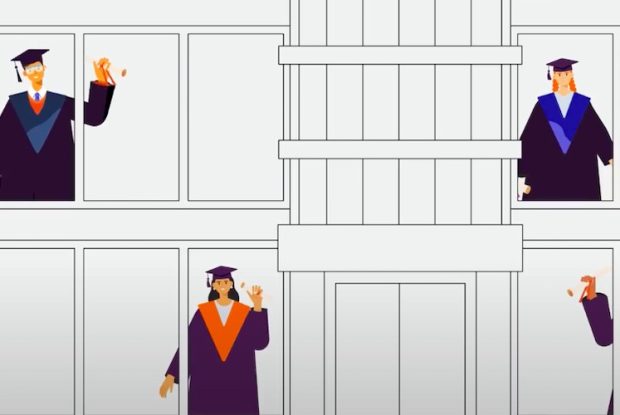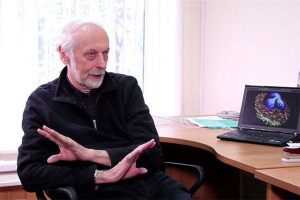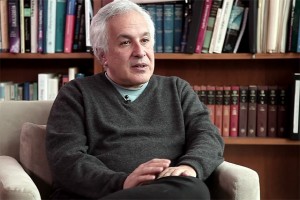Bilingualism
Psychologist Ellen Bialystok on simultaneous learning of different writing systems, cognitive reserve, and mul...

On June 26, 2015, eLIFE journal published a paper “Hippocampal place cells construct reward related sequences through unexplored space” about how the brain may prepare for an exploration of the new environment that is expected to contain a reward. We have asked one of the authors of this research, Dr. H Freyja Ólafsdóttir, to comment on this work.
In this study we found hippocampal place cells that would later provide an internal map of an environment associated with a goal (a tasty rice grain) were preferentially active (‘preplayed’) during rest. Such preplay was not observed for an otherwise similar but empty environment. In other words, the hippocampus seemed to simulate future, goal-directed paths.
In the experiment, animals were individually placed on a straight track with a T-junction ahead. Access to the junction as well as the left and right hand arms beyond it was prevented by a transparent barrier. One of the arms had food at the end, the other side was empty. After observing the food the rats were put in a sleep chamber for an hour. Finally after the barrier was removed, the animals were returned to the track and allowed to run across the junction and on to the arms. During the rest period, the data showed that place cells that would later provide an internal map of the food arm were active. Cells representing the empty arm were not activated in this way. This may indicate that the brain was simulating or preparing future paths leading to a desired goal

The hippocampus has long been implicated in the formation and recollection of memories. Yet in rodents its mnemonic function seems specialized for representing space. In 1971, O’Keefe and Dostrovsky described neurons recorded in the hippocampus of freely moving rats whose activity seemed tightly coupled to the location of an animal in its environment. Specifically, a single hippocampal cell may only become active when an animal is located in, for example, the north corner of a square environment, but then be virtually silent anywhere else. While another cell, may become active in the South West corner. Thus, as an animal moves around in its environment the activity of the population of place cells is largely dictated by the location of the animal. As each place cell is active in a different part of an environment, collectively these cells may provide a kind of ‘cognitive map’ of an environment, which animals can draw on during navigation.
However, during sleep and behavioral quiescence place cell activity seems independent from an animal’s spatial location. Namely, during brief (50-150ms) high frequency oscillatory epochs in the hippocampus, observed during rest, a considerable proportion (10-15%) of place cells become active. As this activity is not related to spatial location, researchers have been intrigued by the function of these ‘noisy’ states. In 1994 Matthew Wilson and Bruce McNaughton put forward the hypothesis that perhaps during rest the hippocampus re-activates hippocampal memory traces associated with past experience (i.e. exploring a novel environment) in order to consolidate and transfer these memories to the neocortex. They found hippocampal cells that had previously been active during novel exploration of a circular platform were also active during subsequent sleep (i.e. ‘replayed’). Moreover, place cells that tended to fire together during wakeful exploration also tended to fire together during subsequent quiescence.
Since this seminal discovery, a wealth of research has been dedicated to understanding the phenomenon of replay better. Although evidence has accumulated indicating a role for replay in consolidation, more recent work suggests it may also play a role in planning and navigation. Namely, during goal-directed navigational tasks scientist have found that the hippocampus replays the future path of the animal. However, what has remained unclear is whether such simulations are limited to paths in a familiar environment. In our study, we sought out to address this caveat and found that, indeed, hippocampal place cells can simulate novel future paths. Importantly, such preplay was only observed for environments associated with a goal (food in this case); perhaps, suggesting preplay represents the neurological marker for prospective thinking, a function only ascribed to the human hippocampus.
The area of replay/preplay is a nascent field of behavioral neuroscience that may provide scientists with the unique and exciting opportunity to understand in great detail the neurobiological processes underlying retrospective as well as prospective mental time travel. However, a direct link between preplay and preparation for future events remains to be shown. Perhaps future studies will be able to show that paths that are preferentially preplayed during quiescence represent paths an animal is more likely to take in the future. Furthermore, showing that preplay is related to how well an animal performs in the future (for example on a navigation task) would imply that this function of the hippocampus is fundamental to animal, and perhaps human cognition.

Psychologist Ellen Bialystok on simultaneous learning of different writing systems, cognitive reserve, and mul...

Biophysicist Georg Büldt on using fluorescent protein markers, hormonal communication during pregnancy, and in...

Harvard Professor Jeff Lichtman on revolution of fluorescent proteins, brainbow as a technique in connectonomi...